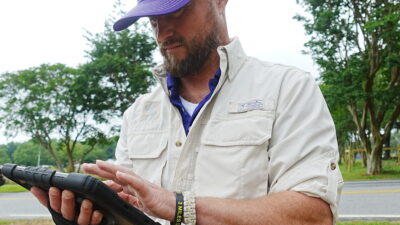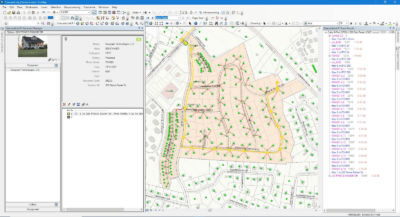Having spent so much time in the Telecom Engineering field, we basically boiled our job duties down to Switches and Ditches. These were the two fundamental parts of telecommunication networks. There were the black boxes on one end doing the switching and the cable in the middle being put in ditches. Picture two tin cans tied together with a piece of string. What kid hasn’t tried that?

In theory, this is simple or at least it was at one time. In the early days of communication, it basically was two electric cans that were connected by the wires between them. Pretty easy to understand and manage. I heard a technician one time explaining how things worked to me when I first got started. His quote was “If they touch they talk!” Telecom pretty much started out that way, two wires to everyone that wanted to talk, and if they touched they talked. Can you just imagine what the world would look like now if we had stayed with that philosophy? The sky would be blacked out with all the wires running to and from.

That’s a far contrast from today’s networks. This generation of Telecommunications is all about how much can be fit into a small package. Gone are the days of basketball court-sized switch rooms that handled just a few hundred calls at a time. Today, thousands, if not millions, of calls and data bits are being transported and switched at speeds only Ph.D. physicists can imagine. The seemingly simple network that many of us grew up with is now a complex mix of a congregation, aggregation, and division multiplexing, creating a seamlessly unbounded informational highway system.
With all the exponential growth in telecommunications technology, one thing that seems to lag behind is the ability to manage it. Even though technology changes almost daily and customer demands are growing just as fast, we still try to manage networks like they are systems of strings and cans. I can’t tell you how many people still keep their Outside Plant, Inside Plant, and Customer Information in siloed departments. Even though in the real world the Switches and Ditches are all working together, within the organization that runs them, they’re not. This results in fire drills anytime information is needed about the network. Gone are the days when someone might go days before they realized their phone isn’t working, and would actually welcome a slow repair time. Imagine, now, that Netflix stops working halfway through the last episode of Mean Girls and your teenager can’t Snapchat her friends about it while shopping for new shoes on Amazon. How valuable are accurate, easily accessible records when trying to solve that potential problem?

Knowledge about your network is more important now than ever, not only with repair times and performance management but also with customer acquisition. If a new customer calls in inquiring about what services are available to them, and you have to talk to three or four different people to find out, guess what, you just lost a customer. Not only did you waste that much organizational time, you just lost revenue as well. Multiply that across your organization. How valuable does network knowledge now become?
At GEOGRAPH, our belief is that you should have control of your network, not the other way around. Today decisions are made at the speed of trust and knowledge, and if you lag behind in either of those, you stand a chance of not being in business much longer. GEOGRAPH Technologies exists to bring you the tools and processes that allow you to “Take Control of Your Network”, and in today’s competitive, complex market, we need all the help we can get. Let us help you take back your network today!
Until next time! Map on!
Bruce Smith




